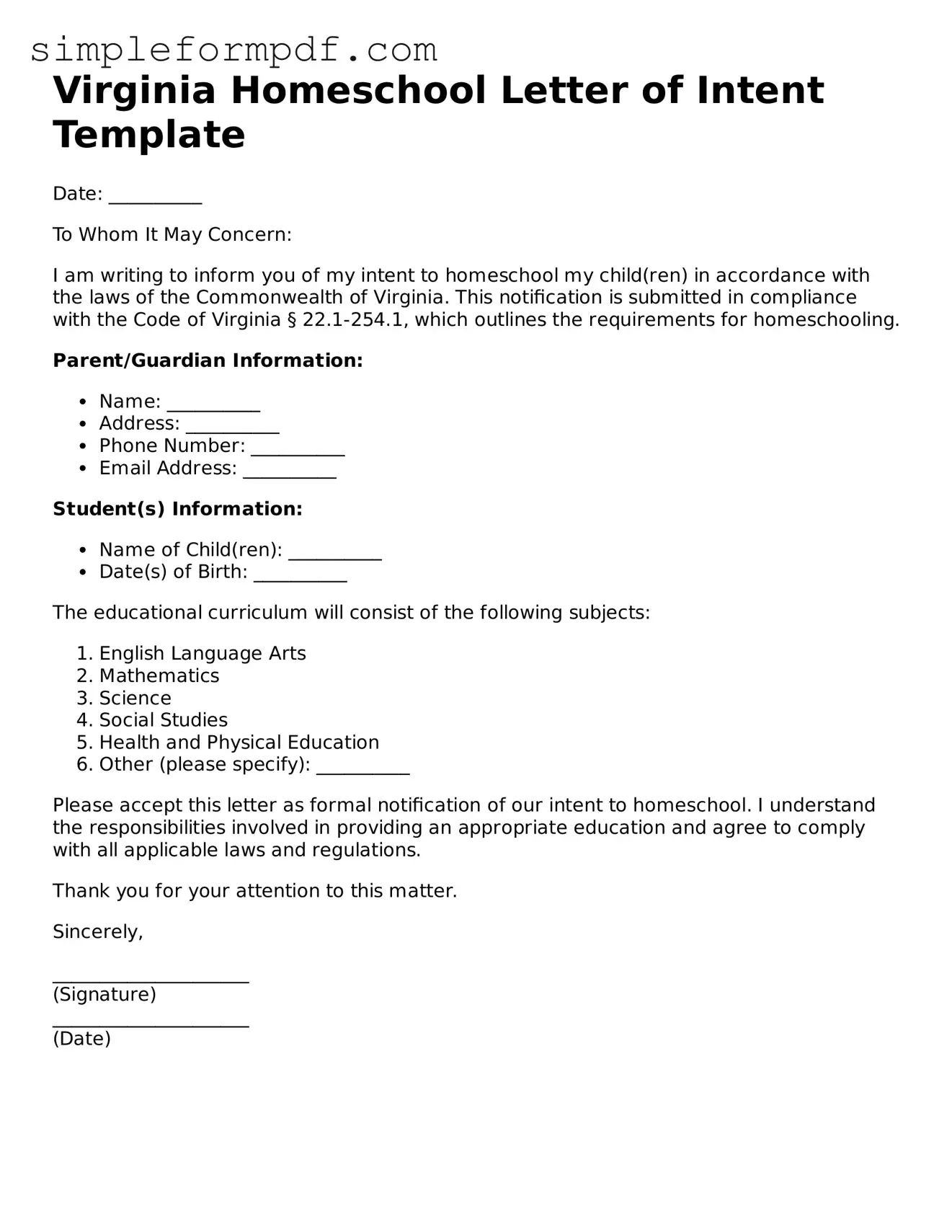Virginia Homeschool Letter of Intent Template
Date: __________
To Whom It May Concern:
I am writing to inform you of my intent to homeschool my child(ren) in accordance with the laws of the Commonwealth of Virginia. This notification is submitted in compliance with the Code of Virginia § 22.1-254.1, which outlines the requirements for homeschooling.
Parent/Guardian Information:
- Name: __________
- Address: __________
- Phone Number: __________
- Email Address: __________
Student(s) Information:
- Name of Child(ren): __________
- Date(s) of Birth: __________
The educational curriculum will consist of the following subjects:
- English Language Arts
- Mathematics
- Science
- Social Studies
- Health and Physical Education
- Other (please specify): __________
Please accept this letter as formal notification of our intent to homeschool. I understand the responsibilities involved in providing an appropriate education and agree to comply with all applicable laws and regulations.
Thank you for your attention to this matter.
Sincerely,
_____________________
(Signature)
_____________________
(Date)
